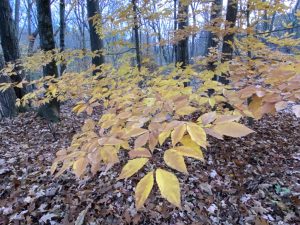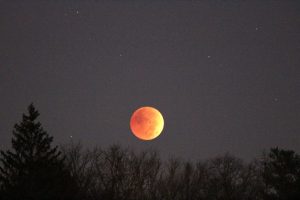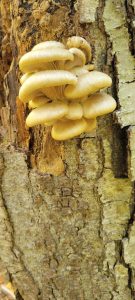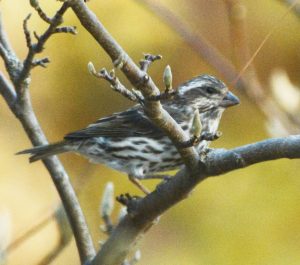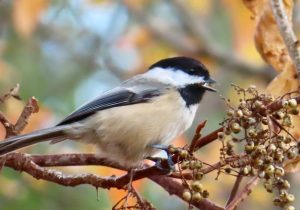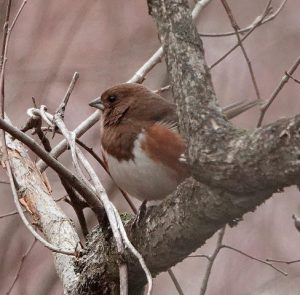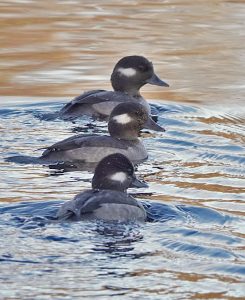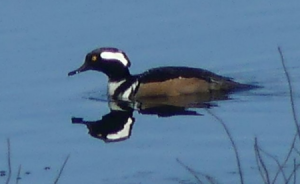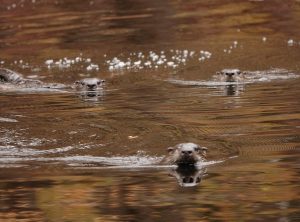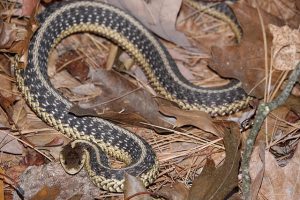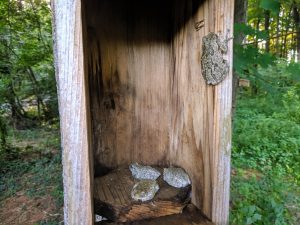Written by Gwyn Loud for the Lincoln Land Conservation Trust. She welcomes your sightings and questions at 781-259-8690 or gwynloud555@gmail.com.
The colors of the landscape are more muted now that most leaves have fallen, including the spectacular oranges and reds of sugar maples. Many oaks, however, cling to their leaves in a rich display of shades of brown, and young beech trees also keep their leaves well into the winter. Yellow and green still adorn the palette thanks to shrubs and trees such as Norway maples, which drop their gold and green leaves late. In the woods some ferns are still green and fungi have continued to flourish, benefiting from recent welcome rain.
The weather over the first part of November was unusually warm, feeling more like September. Outdoor pursuits were pleasant, but the warmth was also an unsettling reminder of climate change. You may even have noticed a few flowers blooming out-of season. In a blog post entitled “Everything Affects Everything”, naturalist Mary Holland writes, “How do late-blooming flowers in the fall as well as increasingly early flowering in the spring affect our ecosystem? For one, think about the timing involved when it comes to pollination. Insects have synchronized their pollination activity to take place when their sources of pollen and nectar are available. Climate change may increase the chance of plant and pollinators becoming out of sync with plants using up energy flowering in the fall after pollinators have disappeared, and flowering too early in the the year for the insects that pollinate then. And then there are the migrating insect-eating songbirds whose return is coordinated with the presence of food on their breeding grounds….”
Birders continued to find migrants in the latter part of October, including lingering fall warblers such orange-crowned, Tennessee, Nashville, palm, blackpoll, and yellow-rumped. Migrating sparrows of various species were also observed in October, as were American pipits, and golden-crowned and ruby-crowned kinglets. Flocks of grackles and red-winged blackbirds passed through and an Eastern towhee, and a few Virginia rails were reported. At Drumlin Farm birds seen included American kestrels, Cooper’s and sharp-shinned hawks, a pair of hermit thrushes, a pair of fox sparrows, a late house wren, solitary sandpiper, and Northern saw-whet owls, the smallest of our New England owls. Bald eagles have been spotted in the crops fields at Drumlin and near the Sudbury River by Lee’s Bridge.
The distant honking of Canada geese drew my attention and I looked up to see a high-flying skein of about ninety geese, clearly headed on a long journey, perhaps starting from the far north. Many of the Canada geese we see in Massachusetts have become year-round residents. Ducks are appearing on our larger ponds, as is usual at this time of year. Recently, on Flint’s Pond, there were twenty ruddy ducks as well as bufflehead, common goldeneye, common mergansers and, earlier in November, hooded mergansers and ring-necked ducks were also present. Wood ducks tend to be shy, seen in one or two pairs, and they favor secluded ponds, near which they nest in tree cavities or special boxes. They generally head farther south for the winter. It was amazing to see a large number congregated in a woodland pool a couple of weeks ago, captured on film by my neighbor.
Those who feed birds have probably noticed plenty of activity from “the usuals”, including our regular winter arrivals such as white-throated sparrows and dark-eyed juncos. A few American tree sparrows have come to stay for the winter. Irruptive species, which primarily live in the northern boreal forests, come down to New England when their food supplies are diminished. Irruptives such as red-breasted nuthatches and purple finches have appeared in small numbers, as well as one pine siskin (so far), and we should be on the watch for others. I keep hoping for evening grosbeaks!
Of course the birds at our feeders continue to feed on berries, nuts, and insects from the natural landscape. Researchers discovered that each blue jay, for example, can cache as many as 3,000-5,000 acorns, picking them from the tops of oak trees, carrying as many as five at once, and then burying them one by one in the soil. The blue jays retrieve most, leaving some acorns to sprout into new little oak trees. This is not a big mast year in our area so the jays may not have a huge acorn supply this winter.
On October 12 the State of the Birds 2022 report was released, published by 33 conservation organization and agencies. The key findings were:
- 1 in 4 breeding birds have been lost from the United States and Canada in the past 50 years.
- 70 Tipping Point Species in the United States have collectively lost 2/3 of their populations in the past 50 years, and are on track to lose another 50% in the next 50 years.
- Birds across the U.S. show downward trends in every habitat except in wetlands, where comebacks of waterfowl show the power of funding and policy investments.
My personal take-away from this worrisome news is that we have to commit more than ever to creating bird-friendly habitat on our conservation land, farms, and our own properties.
Mammals are making winter preparations this month. Those which stay active in the winter may grow thicker fur; this is true for foxes, white-tailed deer, fisher, otters, beavers, mink, and coyotes. The winter fur on deer is also hollow, allowing it to trap air and provide insulation, and it is darker in color than the summer coat, thereby holding more heat from the sun. Some mammals change their diet, eating more berries, nuts, and bark. Raccoons tend be dormant in the coldest winter months and Eastern chipmunks go underground to take naps in a tunnel system they have created which includes storage chambers filled with cached food. Gray squirrels, red squirrels , and rabbits are busy and active all winter. Woodchucks are true hibernators and we will not see them until early spring- perhaps on Ground Hog Day!
As for beavers, Mary Holland writes, “Late October and early November is the busiest time of year for beavers. Their entire winter’s food supply must be cut, gathered, transported and piled next to their lodge so that they will have access to it under the ice. Mud, sticks, wads of grass and stones are collected to reinforce the lodge’s thick walls against the cold as well as coyotes and other predators. And dams, the structures which create ponds, must be patched and strengthened to withstand the rigors of winter.”
Where do frogs go in the winter? It depends on the species. Bull frogs, green frogs, and leopard frogs, for instance, go to the bottom of the pond and into a period of dormancy for the cold months, with lowered metabolism, taking in oxygen through their skin, with their heart rate lowered to just a few beats per minute. If a warming spell occurs they will stir and move about. Spring peepers, gray tree frogs, and wood frogs, on the other hand, have developed another strategy. They hibernate on land but find sheltered places to hide, and can actually withstand temperatures well below freezing, thanks to having built in “antifreeze”. During mild weather they can thaw out a bit and spring peepers have actually been heard giving single calls in any month. Several people have reported hearing peepers or gray tree frogs during our recent unusual warm spell. Garter snakes and painted turtles have also been seen during this warm period but with the arrival of normal cold temperatures they will go into brumation, a dormant and sluggish state, when they do not need to eat. Snakes curl up in protected places such as stone walls or burrows, while our local turtles, such as painted and snapping, go down to the bottom of ponds for the coldest months.
And insects? We see very few at this season, but they are present in various forms; if you see a chickadee, for instance, pecking at bark, it is probably looking for insect eggs or pupae. We have still been hearing crickets and last week I heard a katydid singing the last two syllables of its name very slowly after dusk, “-TY..DID.” Norman Levey writes, “The sweet calls of the jumping bush cricket are still heard on mild days and evenings. They survive light frosts, their songs slowing and falling in pitch on cold evenings. The last singers are the ground crickets, mostly Carolina ground crickets, lingering under the insulating blanket of leaf litter. Individuals can be heard to the end of November and often a week into December.” Observers have noticed monarch butterflies late in October and clouded sulphur butterflies even into November. The monarchs are on a journey they have never made before, flying fifty to one hundred miles a day to the central highlands of Mexico, (a migration marvel, in my opinion).
Tick season continues, with many nymphs present in the fall and adults out and about in the winter as long as it is above freezing, so please continue to check for them.
Looking to the skies, this is the month to be watching Mars, the red planet, rising in the east at sunset, a little later and brighter each evening. It will be closest to Earth on Nov. 30 and at opposition on Dec. 8, meaning Earth will be directly between Mars and the Sun.
Links
To read more about the State of the Birds Report 2022
To learn more about Avian Migration (Conservation Coffee recording)
To watch many wood ducks in a pond (video by Carol Roede)


